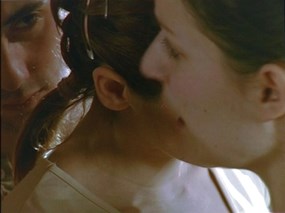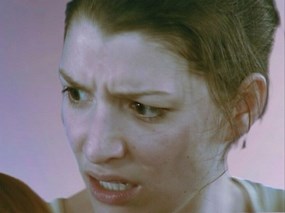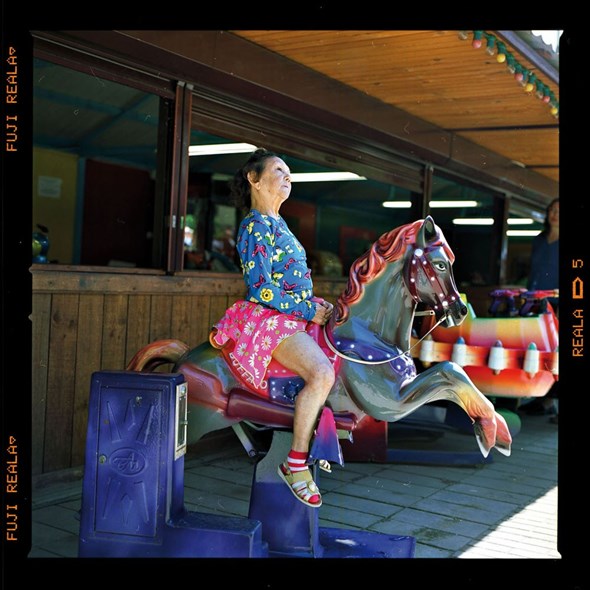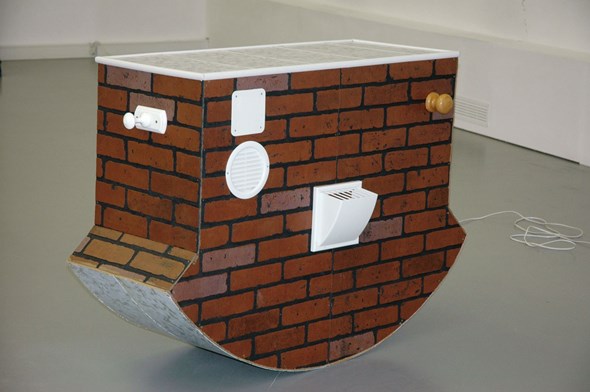By Oleg Kulik
I like artists whose work is based on feeling rather than intellect. At present, however, the situation of Russian art has reached the point where merely sketching the idea for a project, formulating it beautifully, is already thought to be an artwork. That is very bad, because it leads to a degradation of the conceptuality of what makes a work of art. As a result, a work of contemporary art is seen as an illustration of some statement. It needs to be said that the best artists of an earlier generation, such as Bulatov, Kabakov and Michajlov, understood this very well. In formal terms they »worked« as illustrators of conceptual statements, but in doing so they by no means lost their essential connection with reality. As a result, they created not just lively artworks but explicitly something that was associated with personal, intense experiences. For one: heaven, for the second: the Soviet communal dwelling, for the third: people from the gutter. And all three could never leave reality alone. A new generation of artists – I want to tell you about the five most interesting of them – prove with their work that the time of Conceptual Art has passed and a new phase has begun, which can be called »New Honesty«, »New Seriousness« or »New Religiosity«.

Viktor Alimpiev
The impulse for a new project is an event, an experience, a perception that comes from outside. This applies especially to Viktor Alimpiev, who in fact says so very clearly. He waits for something, perhaps a hand gesture or an amusing phrase that someone uses in the street and which then refuses to go out of his head. Starting there, threads of imagination and thought spin themselves. Consequently, his art is also in touch with reality. A crowd of people speaking German, meaningless to him as a Russian. The video is set up in such a way that it is clear that this is a crowd of people filled with some kind of incomprehensible energy. At first sight a very socio-political work, but at the same time one that cannot be brought into relationship with current political realities. More like metapolitics. I would say that a new and previously unrecognised religiosity shimmers through whatever Victor makes, not associated with some fixed knowledge but with a search. *1973 in Moscow, lives in Moscow


Dmitrij Bulnygin
Bulnygin is the precise opposite of Alimpiev. He positions himself as an experienced materialist and doesn’t think that what he does reflects the magic of reality. Bulnygin is inside his own metaphysics. His reality emerges again in his poetics, and if you tried to define his poetics, it would be metaphysics»from below«. It is close to my own physiological, zoophrenic period and pleads for a breakthrough into the authentic through the »lower«, where the authentic is, as everyone knows, always metaphysical. If one looks for the differences between him and the »Sinie nosy« (»Blue Noses«), which he helped to found, it is possible to make the important observation that his works never react to society. It is quite permissible to say that»Sinie nosy« is a matter of journalism, while Bulnygin is an artist. *1965 in Novosibirsk. Lives in Novosibirsk

Alla Esipovic
At first sight, Alla Esipovic has a place in a group of Russian artists like Michajlov and Bratkov. All of them photograph ugly people, but the perspective of Bratkov and Michajlov is harsh and patronising, while Esipovic’s vision is more human: with her work she conveys a special – I am not afraid of the pathos in this – warmth. I understand that it is hard to hold onto that, because a contemporary artist is constantly expected to deliver concepts. While Alimpiev, for example, formulates his relationship to reality as a metaphysical one, and yet uses a pragmatic, clear and intellectual language, Alla does not formulate hers explicitly. She takes the reality of Saint Petersburg, where everyone is really unhappy and alone, and yet believes, at the same time, that they are stars. As an artist Alla seeks what she understands and what she feels responsible for, in contrast to others, who have read something or other in books or relate themselves to themes that are not perceived in their own environment. If Esipovic can preserve her connection with her themes and not try to re-tell fashionable themes, her channel of sensitivity will carry her a long way yet. I like her artistic passion and her desire for art. *1965 in Leningrad, lives in St. Petersburg

Irina Korina
In her works Irina Korina uses materials of the kind do-it-yourselfers once used to beautify things in the Soviet period, tasteless, simple or high-quality materials. When you see these objects, you are reminded of many things. They are objects of pure poesy. Irina is a trained stage designer, which explains her fantastic ability to work with space. Her installations totally transform real space, changing its configuration and dimensions. That is also a kind of stage set, although the stage is not for actors but rather for viewers, who, at Korina’s exhibitions, experience the feeling, familiar from nightmares, of a person who is suddenly standing on a stage without the faintest idea what he is supposed to do and how he came to be here in the first place. Regardless of all the retroglamour, this design seems to have been made by us, ourselves. When we look more closely we see, in the ornately twisting furniture an enlarged part of a mobile telephone. An interior, deliberately sophisticated in its extravagance, which you take for an exclusive bar, is suddenly transformed into an enlarged dolls’ house. A girl from a not very wealthy family might furnish the room for her Barbie like this. *1977 in Moscow, lives in Moscow
Sinij sup
The poetics of »Sinij sup«, like that of Alimpiev follows the logic of dreams in many ways. We remember one of their works, a car on the bank of a lake. Very strange. But in contrast to Alimpiev they set themselves at a distance from society. At the same time their works are extremely visionary. They work on the periphery of society, reflecting a state of anxiety and depression in their video installations. »Sinij sup« divide the world into the social and the existential, but they let the social disappear and put the existential in the foreground. With their works they say: the horrors of the world around us are far away, where we are all is still and peaceful, but in this stillness there is a coming storm. I think»Sinij sup« carries on where the artist group »Fenso« left off. In the middle of the nineties »Fenso« developed a new artistic vision for the Russian scene, but as a group it soon vanished from art again. Founded in 1996 by Alex Dobrov, Daniel Lebedev and Valery Patkonen. Since 2002 collaboration with Alexander Lobanov. Live in Moscow
